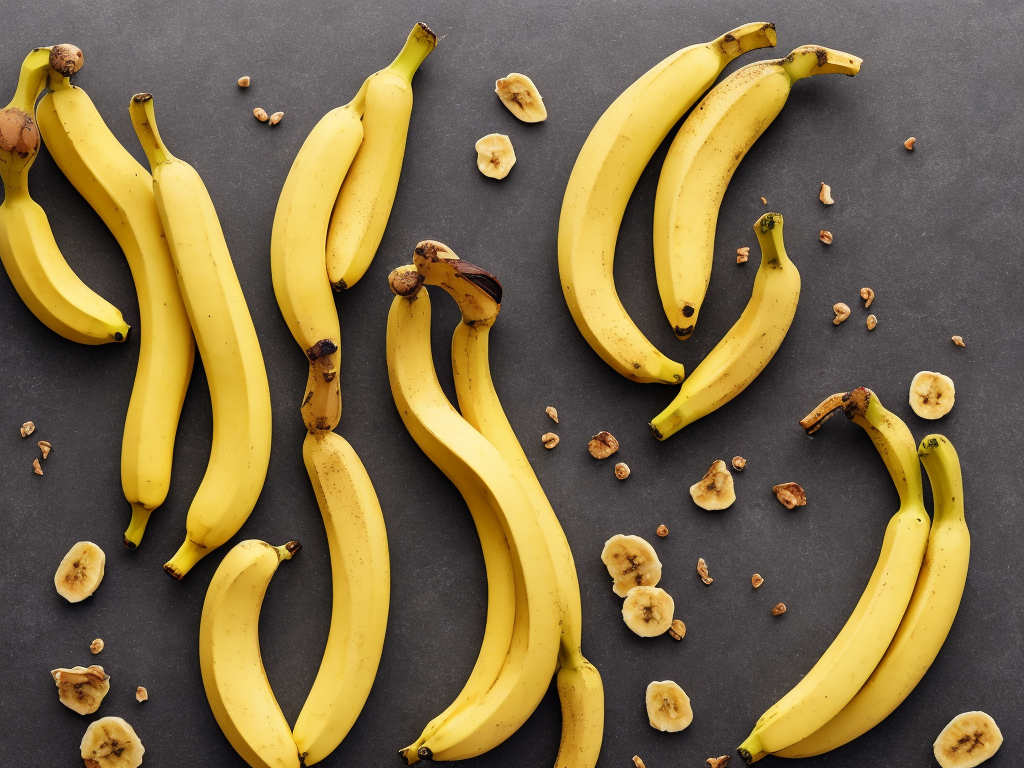
Bananas and plantains are popular fruit options in many parts of the world. While they both belong to the same plant family, they have distinct differences in terms of taste, texture, and uses. In this article, we’ll explore the key differences between bananas and plantains.
Appearance and Size:
Bananas are usually smaller than plantains and have a curved shape. They come in different shades of yellow and green and have a slimmer build than plantains. Plantains, on the other hand, are larger and more elongated than bananas. They can reach up to 12 inches in length and are a darker shade of yellow or green, often with brown or black spots on the skin.
Taste:
The primary difference between bananas and plantains is in their taste. Bananas are sweet, soft and creamy, while plantains are starchy and less sweet. Plantains have a pleasantly mild flavor that pairs well with savory dishes. In fact, when plantains are cooked, they take on a completely different flavor profile than when eaten fresh. They become much sweeter and much more enjoyable in savory recipes.
Texture:
When it comes to texture, bananas are soft and easy to eat raw. They have a creamy texture that melts in your mouth, and they are often used in smoothies, salads, and desserts. Plantains have a firmer texture and are typically cooked before consumption. They are not usually eaten raw unless they are very ripe, and even then, their texture is not as soft as bananas.
Cooking Methods:
As stated earlier, bananas are usually eaten fresh and raw or used in smoothies, salads, and desserts. Plantains, on the other hand, are suitable for cooking and are used in a variety of dishes. They can be fried, boiled, baked, or even roasted. In fact, there are many delicious plantain dishes out there, from chips to soups to stews.
Ripeness:
Both bananas and plantains ripen over time, but they do so differently. When bananas ripen, they turn yellow or a deeper shade of yellow, and their skins become easier to peel. When plantains ripen, however, they turn black or brown and their skin becomes harder, making them harder to peel. Overripe plantains can be challenging to cook with, as they can become mushy.
Nutrition:
When it comes to nutrition, bananas and plantains are both high in potassium and fiber. Both fruits are also low in fat and calories. However, plantains are a bit higher in calories and carbohydrates than bananas since they are generally cooked and often used in starchier dishes.
Uses:
Bananas are mainly used in sweet dishes such as smoothies, desserts, and sometimes in baked goods. Plantains, on the other hand, are more commonly used in savory dishes such as stews, soups, and fried dishes. Fried plantains or “tostones” are a popular snack in many parts of the world, especially in Latin America and the Caribbean.
Conclusion:
In conclusion, bananas and plantains may look alike, but they have distinct differences in terms of taste, texture, and cooking methods. Bananas are sweet and creamy, while plantains are starchy and less sweet. Bananas are usually eaten fresh and are used in sweet dishes, while plantains are usually cooked and used in savory dishes. Regardless of which one you prefer, both fruits are delicious, healthy, and worth trying in different recipes.
 Self-Instruct
Self-Instruct